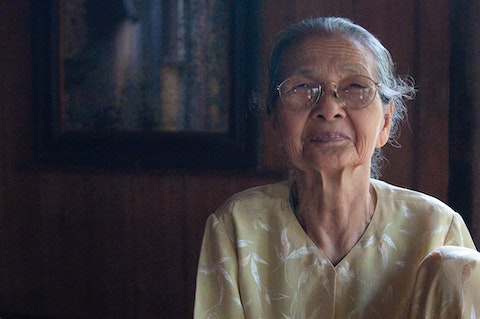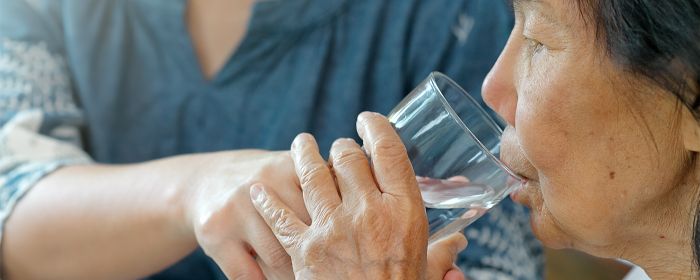COVID-19 has disproportionally affected the elderly. In China, where the outbreak began, the death rate for people 80 years and older has been 14.8 per cent, and for those between 70 and 79, eight per cent. This according to a China Research Philanthropy Institute report that also notes that 80 per cent of all national fatalities involved citizens older than 60, with 75 per cent of those individuals having pre-existing conditions. At the start of the pandemic, there was a cluster of COVID-19 fatalities at the Social Welfare Institute in Wuhan, a nursing home located one block away from Huanan Seafood Market, the epicentre of the novel coronavirus outbreak. Between December 23 and February 18, there were 19 fatalities at the Institute, 18 of which involved people over 79 years old. Other COVID-19 related deaths took place at two other nursing homes in Wuhan.

How quickly things change. Since late January 2020, after Beijing initiated its ‘all-out war’ to contain the virus, China has taken strict policy measures to protect senior citizens, including issuing directives to reduce the risk of transmission within senior care facilities. Currently, there is little evidence of other senior citizen fatality clusters occurring in China since the central government took these added measures. At the local government level, officials have recently leveraged existing local organizations, such as the Neighborhood Resident Committees, and existing senior care and medical care digital platforms, to identify seniors in need and provide support for their basic requirements, including food, shelter, and medical treatment.
China has taken strict policy measures to protect senior citizens, including issuing directives to reduce the risk of transmission within senior care facilities.China’s aggressive efforts to protect seniors within its COVID-19 response is likely attributable to two factors. First is the pervasiveness of the ethos of filial piety in Chinese society. Second, the Communist Party of China derives its legitimacy not only from public adherence to it proscribed cultural norms, but also from its own performance. In the case of COVID-19, this means less deaths – an objective that could only be achieved by providing additional protections for the elderly.
Protecting senior care facilities
In late January, when Beijing learned that seniors were especially vulnerable to the COVID-19 virus, it began unveiling a series of policies for protecting this demographic group. On January 28 and February 7, the central government and the Ministry of Civil Affairs published two manuals and a major policy document on how to protect seniors living in senior care facilities, particularly in high-risk areas such as Wuhan. The manuals set up strict guidelines to mitigate the risk of contagion originating with care workers by minimizing the interaction of care facility employees with the outside environment.

The manuals stipulate that care workers can reside only within a senior care facility or in an outside facility designated especially for care workers that have a room for each employee. People living at these outside facilities are barred from using public transportation and must rely on government arranged commuter transportation.
The manuals also include other strict guidelines to keep the virus away from senior care homes. Both residents and workers who leave these facilities for either medical checks or other purposes must be quarantined for 14 days upon return. For non-emergency medical problems, seniors can choose to virtually consult with a medical professional instead of going in person to see a doctor. People entering senior care facilities must provide their recent travel history, have their temperature taken, and are provided with hand sanitizer and a mask to wear.
Technology and community-enabled response
The Chinese government also quickly formulated a strategy to support seniors living at home – 90 per cent of China’s seniors. China’s strategy was to draw on existing neighbourhood Party branches unique to China, notably the Neighborhood Resident Committees in urban and Village Resident Committees in rural areas. These organizations, comprising non-Party residents but answerable to the neighbourhood Party branches, are in charge of monitoring the local population through the collection of information on each of the neighbourhood or village residents. By leveraging ground-level data obtained by these organizations, the central government has been able to identify, contact, and provide support.They are also responsible for helping their local governments in providing services to the community, including assistance to weak and vulnerable groups, such as seniors. On January 28, the central government requested that these Resident Committees obtain all information about the following categories of elders: living alone, empty nesters, disabled, frail, and ‘left behind’ rural seniors whose children have migrated to the cities. By leveraging ground-level data obtained by these organizations, the central government has been able to identify, contact, and provide support to stay-at-home seniors. Members of Neighborhood Resident Committees and employees or volunteers with local, non-profit social organizations have paired high-risk elders with volunteers to help deliver groceries and medicines to their door. Seniors living alone are also offered daily check-ins with volunteers to combat the loneliness of social isolation.

The Chinese government has also been promoting the use of technology in senior care by offering research and development subsidies to tech companies and tax incentives to organizations that adopt such technologies. This investment is now paying off as health-care technology has helped provide new care solutions for seniors during the pandemic. Seniors have been encouraged to use e-medical services like online doctor’s appointments and health self-assessment tools through their phones, wearable devices, or with the help of volunteers. In addition, through e-medical services, doctors are able to digitally authorize prescription refills for up to three months for seniors with long-term health conditions. In Xi’an city, community workers have installed ‘virtual senior home’ – a service that integrates online monitoring and offline assistance for stay-at-home seniors. Community workers monitor seniors’ locations and basic health condition through a cloud-based system. When a senior leaves their home, community workers get digital notifications that allow them to make contact and offer help.
The central government has also put a policy in place to support seniors whose caretaker is temporarily unavailable, usually due to working on the frontline or because of the nation-wide travel restrictions. For example, to support seniors whose caretakers are frontline health-care workers, the Beijing municipal government has designated 24 senior care facilities where seniors can temporarily reside, and benefit from food and nursery services provided by either care workers, social organizations, or volunteers.
Canada’s take-aways
China’s experience with protecting the elderly during the pandemic is relevant to Canada, where the virus has also caused a disproportionate number of deaths among seniors. As of April 20, Canada has had multiple cases of COVID-19 outbreaks in senior care facilities, notably Pinecrest Nursing Home in Bobcaygeon (Ontario), where 29 residents have died, Lynn Valley Care Centre (British Columbia) with 20 fatalities, and Laflèche long-term care centre (Quebec) with 12 deaths. On April 13, Canada’s Chief Health Officer, Theresa Tam, conceded that close to half of Canada’s COVID-19 fatalities have occurred in senior care facilities. Canada’s Chief Health Officer, Theresa Tam, conceded that close to half of Canada’s COVID-19 fatalities have occurred in senior care facilities.Public health governance in Canada, particularly in relation to senior care, will likely be overhauled as the country assesses its COVID-19-related challenges. Extracting lessons from China’s experiences and challenges in protecting the elderly during the pandemic will be instructive for Canadian elder care organizations and government policy moving forward.

The leveraging of existing digital platforms to support seniors during crisis may be of particular interest to Canadians. For several years now, China has been promoting the usage of the ‘Internet-of-things’ in both medical care and senior care to enable both self-monitoring and distance senior care. Due to a variety of structural factors, however, these sectors have not quite taken off. The recent crisis may give an enormous boost to these initiatives and help digitally transform the senior care industry.
Currently, China is trying to build on the momentum already gained during the pandemic. On February 28, the Chinese government published a document on reigniting China’s domestic market amid the COVID-19 recession through the promotion of key sectors, notably ‘Internet-based social services’, such as electronic patient records for family doctors and ‘virtual senior care homes’ for seniors residing at home. In Canada, where there is a still a market vacuum for virtual senior care and its related technology and talent, China’s experience may be well worth exploring.






